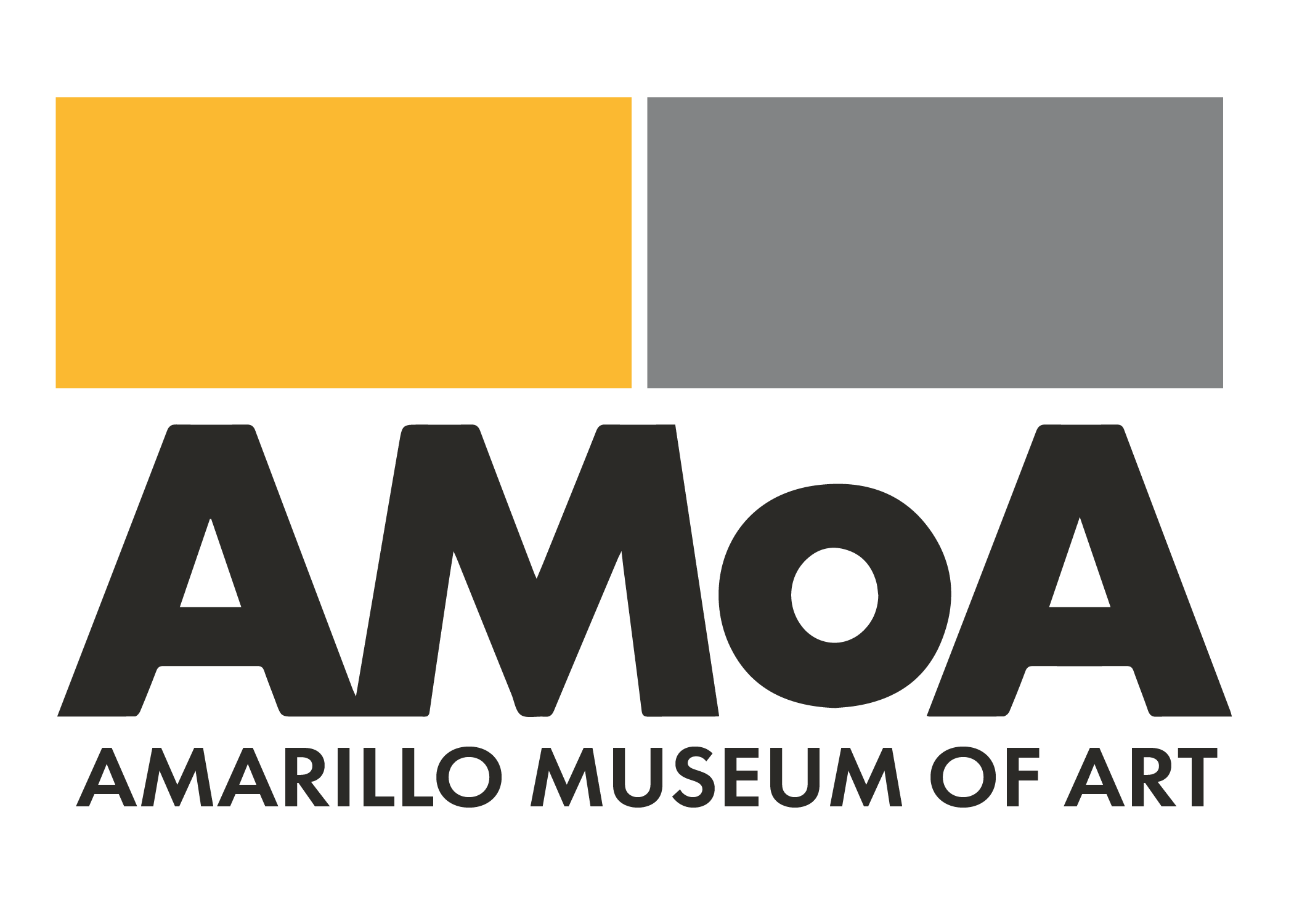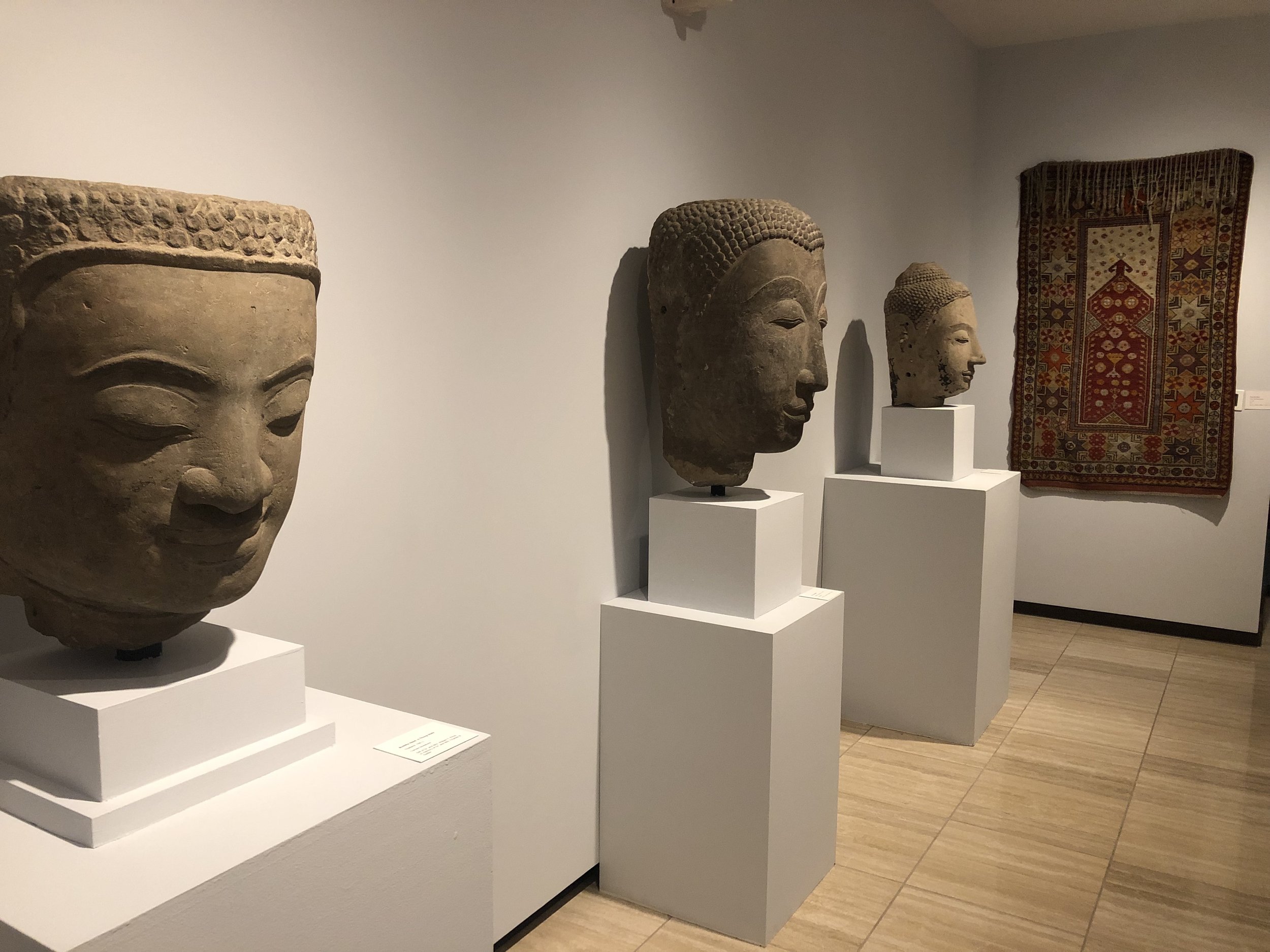THE COLLECTION OF
DR. anD mrs. william t. PRICE
Over 50 Years Collecting Asian Art
WHAT IS THE PRICE COLLECTION?
The Collection.
Buying What You Love.
The Amarillo Museum of Art’s Asian art collection has grown dramatically over the past 10 years through the generosity of Dr. and Mrs. William T. Price of Amarillo. Their donations of art objects have and will spark a variety of significant exhibitions, introducing Asian art and culture to the Texas Panhandle community and to visitors near and far.
Over the past 50 years, Dr. and Mrs. Price have collected sculpture, prints, paintings, textiles and decorative arts from South/Southeast Asia, Japan and the Middle East. They have donated over 300 works to the Permanent Collection, including nearly 150 Edo Period (1615-1868) Japanese Woodblock Prints, and over 15 significant Hindu and Buddhist sculptures dating from the 2nd– 19th centuries. The origins of these sculptures include India, Cambodia, Nepal and Indonesia (including works from Java’s monumental Buddhist temple complex, Borobudur). Textiles are also one of the Price’s passions, and they have generously donated over 75 Islamic prayer rugs and secular rugs, saddle blankets and bags from such countries as Turkey, Afghanistan, Iran, Spain and Tibet.
In February 2005, the Museum and its Board of Trustees honored Dr. and Mrs. Price with the naming of a Museum gallery in their honor; it is now called the Price Gallery of Asian Art.
WHO IS DR. WILLIAM T. PRICE?
The Collector.
There is a theory that collectors are born not made. The theory also suggests that the overwhelming fundamental drive to acquire, organize and preserve beauty is neither inherited nor acquired, but in reality, springs from the individual’s independent character and personality. Certainly, that drive represents the single characteristic of all collectors. Their approach to beauty is not the hallmark of any national, cultural, social, economic or even age group, nor is it generally predictable by or about a given individual. Indeed, it will appear in early childhood, in the midday of life or even well past middle age. And it comes without warning, this discovery of such an important part of oneself, like a sudden storm or wave that sweeps away the fortunate victim on a wild and almost uncontrollable journey to undreamed adventures and to frontiers he has never seen before.
So it was some 55 years ago, when a young neurosurgeon, wearing silver bars of a first lieutenant in the United States Army Medical Corps, arrived for duty in Japan. Almost immediately, a friend led him on a tour of galleries where he experienced, for the first time, an art two thousand years old and where, in one way at least, the rest of this life began. Over the next two years, Dr. William Thomas Price would learn the language, study the culture and history, acquire the nucleus of a library and establish the foundations of what would become a premiere collection of Japanese art. That was just the beginning. Some ten years later, after collecting Navajo rugs for five years, he decided that he wanted an oriental rug for the house. After much reading and shopping, he purchased his first oriental rug and began his collection in earnest. Over the next twenty years arose what today ranks among the finest and most extensive collections of Islamic carpets ever assembled in the Western hemisphere.
More than enough for one lifetime, one might reflect, but not for this collector. The best was yet to come. In 1979, on a trip to India, it happened again, this time among almost forgotten ruins with ancient sculpted shapes appearing everywhere. The now familiar story of yet another new world and another new frontier, would repeat itself once more.
The Price Collection, at the Amarillo Museum of Art, provides a rare window to 55 years of one of the most unusual and successful careers ever enjoyed by an American collector of art. At the very least, it gives us an important view of sculpture from ancient and lost civilizations which reaches from Western Asia east to the Pacific and spans from the 2nd to the 15th century and beyond, and also a view of a wide range of Islamic carpets drawn from a wholly different world, time and place. At the very best, it presents a spectacular introduction to very different expressions of art with that unique combination of variety, excitement, loveliness and beauty.
This collection constitutes a measure of three great collections and a reflection of the man who made them, of unlimited vision and devotion to a cause, and above all, of courage to strive for great things and the ability to achieve them.
William Russell Pickering
Houston, Texas
From Divine Images and Magic Carpets: The Asian Art Collection of Dr. and Mrs. William T. Price
ISLAMIC PRAYER RUGS FROM THE PRICE COLLECTION
Art and Function.
During the past century, Islamic prayer rugs have become valued throughout the world as works of art in addition to being functional objects. Made for both individuals, mosques and ceremonial gifts, prayer rugs are produced in central and western Asia.
In Islam, practicing Muslims are required to perform five compulsory prayers daily on a clean surface that has not been soiled. Prayer rugs therefore, are both well used and well cared for. Their design includes an arch at one end, called a mihrab, or “gateway to paradise.” This mihrab echoes the prayer niche in the wall of every mosque – the apex that is pointed toward the Holy City of Mecca, where all Muslims face in worship. Some prayer rugs have mihrabs, which are lined up next to one another or even appear at both sides of the rug.
Prayer rugs are often adorned with special religious symbols and even prayers written in local scripts. Symbols often remind the user of Islamic prayer rituals, indicate the presence of Allah and reference the eternal conflict of good vs. evil. Both floral and geometric designs are used.
All of the rugs in this exhibition were hand-made by weavers in towns or regions known for their rug production (Melas, Ladik, Bergama, Hereke, etc.) or by nomadic or semi-nomadic tribes (Yuruk). The process of making a pile rug typically involves stretching warp threads on a loom and knotting the pile to these threads. When a row of knots is completed, a weft thread is inserted. To a large degree, the precision of the design depends on how tightly the rug has been knotted and how short the pile has been cut. Variations in a rug’s dimensions only confirm the fact that it is not machine made. In fact, in Islamic thought, these imperfections remind the user that only Allah is perfect.
JAPANESE WOODBLOCK PRINTS
Illusion and Reality.
What we see may not be all that simple, or all that is meant to be conveyed. Illusion and reality refer to both the illusion that we see before us, and what complex factors are behind the reality of what we see. As a viewer, looking at even one of these prints or paintings is exciting, curious and complex experience. So much information about the time period, culture and specific subject is being conveyed at once, that it is difficult to take it all in. The title, “Illusion and Reality” refers to the complexity of the prints and paintings in the exhibition. What we see on the surface may be quite different from what the artist intended his audience to see.
The Edo period (also sometimes called the Tokugawa Period) lasted from 1615 to 1868. In 1615, Japan’s ruler, the Tokugawa Shogun Ieyasu, moved his government capital to the former fishing hamlet of Edo. As a result, all the warriors and noblemen had to follow. Farmers, merchants, artists, actors and others accompanied them in order to provide for the needs of the samurai class and to round out the social and economic infrastructure. Edo became the largest city in the world at that time. Its 1.1 million inhabitants were carefully molded, however, into a hierarchical social structure that was impossible to circumnavigate.
Societal structure in the Edo period contributed a great deal to the sophisticated complexity of these artistic creations. The illusion as societal standards set forth, was that the samurai were at the top of social hierarchy, as they did not produce anything, but rather made financial gains through others. With nowhere to go due to containment pressures from above, this culture turned back into itself. At the same time, it appropriated traditions historically fostered within the upper social strata. Combinations of image and text result in powerful designs whose content can be read and appreciated on a variety of levels.
It is interesting to note that though Japanese prints are greatly appreciated works of art today, they were disposable and affordable in their day. Just as in our time, people display posters of movie stars and singers, or collect baseball cards or comic books, the prints of the Edo period were similar in function. The consumers of these prints were, interestingly enough, from the lowest classes of Edo society – the Chonin. Chonin, which means townspeople, was made up of both merchant and artisan classes and comprised half of the population in Edo. The interaction between chonin and the samurai resulted in a complex societal structure that contributed so much to the veiled illusion behind these prints and paintings.

